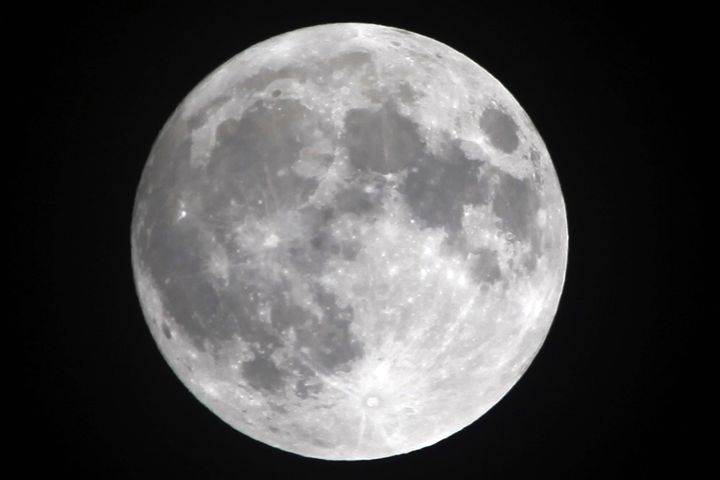The moon’s surface holds more water than previously thought, scientists have confirmed – a discovery that could make deep space exploration easier than ever.
While it has been known that hidden pockets of water exist in the permanent shadows, this is the first time liquid has been identified in the sunlit areas.
Paul Hertz, director of the astrophysics division in the science mission directorate at Nasa headquarters in Washington, said: “We had indications that H2O – the familiar water we know – might be present on the sunlit side of the moon.
“Now we know it is there.

“This discovery challenges our understanding of the lunar surface and raises intriguing questions about resources relevant for deep space exploration.”
Nasa had teased the announcement about the moon earlier.
It emerged that existing pockets of water on the moon could be much more common than scientists previously thought.
Researchers suggest that in some cases tiny patches of ice might exist in permanent shadows no bigger than a penny.
They explored phenomena on the moon called cold traps, which are shadowy regions of the surface that exist in a state of eternal darkness.
It is thought that many have gone without a single ray of sunlight for potentially billions of years.
Now scientists say there may be a lot more of these nooks and crannies than previous data suggests.
Paul Hayne, assistant professor in the laboratory of atmospheric and space physics at University of Colorado Boulder, said: “If you can imagine standing on the surface of the moon near one of its poles, you would see shadows all over the place.
“Many of those tiny shadows could be full of ice.”
Drawing on detailed data from Nasa’s Lunar Reconnaissance Orbiter, the researchers estimate the moon could harbour roughly 15,000 square miles of permanent shadows in various shapes and sizes.
According to scientists, these might be reservoirs capable of preserving water via ice.
Prof Hayne added: “If we’re right, water is going to be more accessible for drinking water, for rocket fuel, everything that Nasa needs water for.”
Previous research has reported signs of hydration on the lunar surface, particularly around the south pole.
However, Nasa says these detections are unable to tell the difference between water and hydroxyl (oxygen bonded to hydrogen) bound in minerals, meaning they are less reliable.
